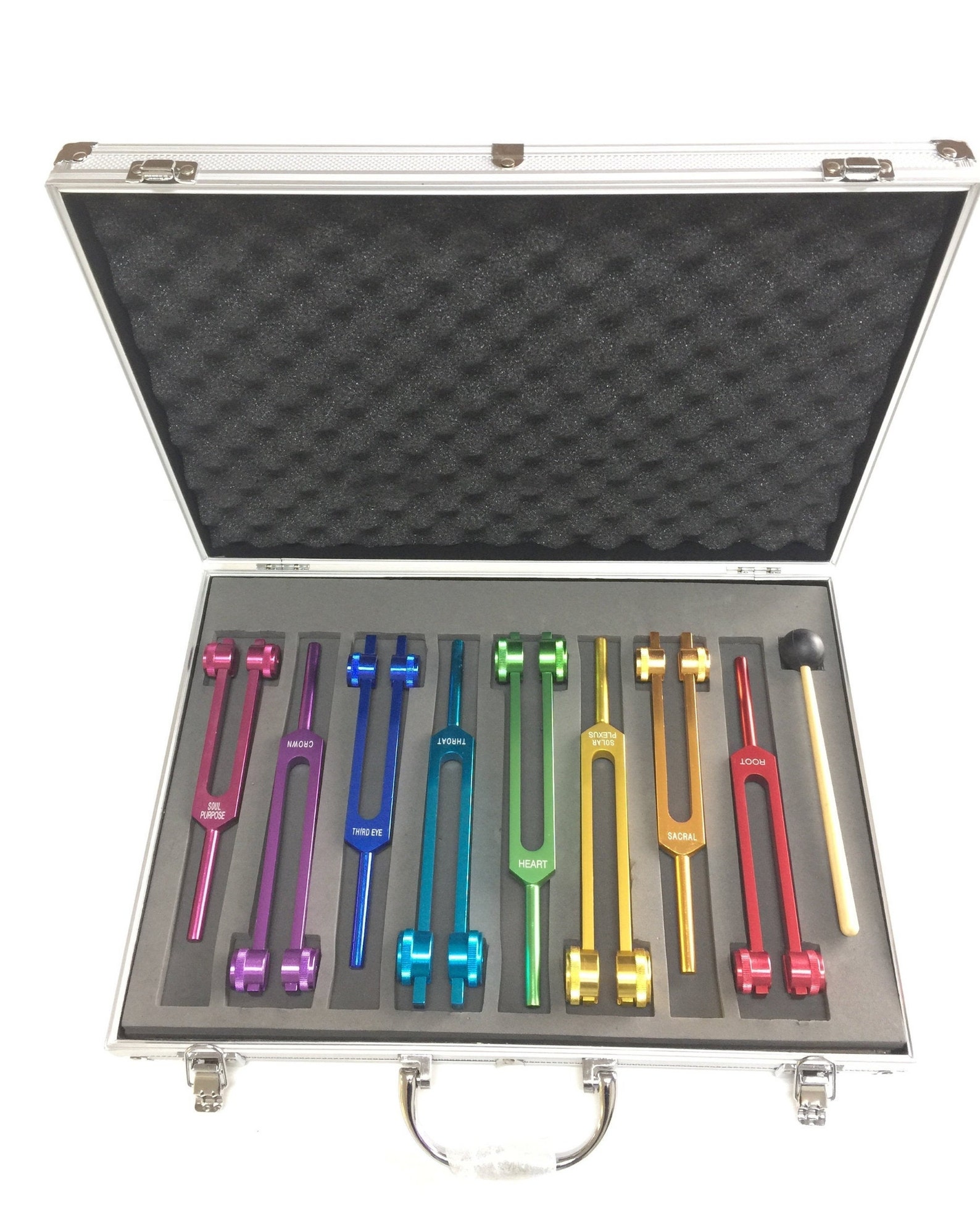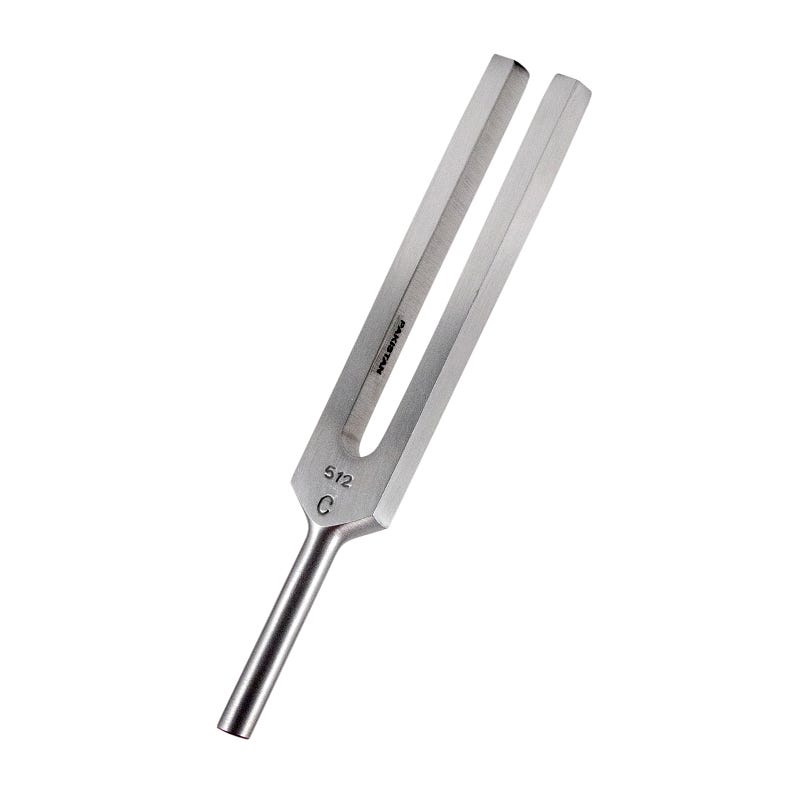


Tonic 1st overtone of our fundamental frequency one of these forks is tunable The following table lists the various frequencies that we have available with comments.

The simultaneous receding and approaching (via a blackboard reflection) tones of the tuning fork interfere and produce beats (from the students' frame of reference). Alternatively, beats may be produced by walking briskly away from the class towards the blackboard with tuning fork in hand. One of the 256 Hz tuning forks is also adjustable in frequency so that beats may by heard when it is sounded simultaneously with a regular 256 Hz fork.

Additionally, a frequency analyzer shows a single frequency component (however, if the gain is turned up high, you may also see the frequency components due to the resonances of the sound box or harmonics of the tuning fork if it was whacked too hard). A microphone/preamp/scope setup may be used to visually demonstrate the pure sinusoidal sound wave. The evolution of these instruments and methods is described in detail and illustrated by exhibits from the museum.Selection of mounted tuning forks and rubber hammer.Įach tuning fork is mounted on a wooden sound box to amplify the sound (they're very difficult to hear without the box). The results of testing the hearing via air conduction and bone conduction measured in duration and calculated as percentage of normal hearing were presented in charts (Hartmann 1885, Gradenigo 1893) which can be considered precursors of modern audiograms. Graphic presentation of quantitative results of hearing testing: With this instrumentation it was possible to test the whole range of hearing. It comprised ten tuning forks with sliding clamps, two pipes of the organ type, and a Galton whistle.
#Tuning fork purpose series
The most sophisticated example of these sets was the Bezold-Edelmann continuous tone series (1894). A number of tuning forks at intervals of one octave each were assembled in sets to cover the whole frequency range of hearing. The time during which a patient hears the tuning fork after it has been struck as compared to that of a normal hearing subject was measured as parameter of hearing acutiy (v. Methods for quantification of measuring hearing acuity: A wedge-shaped figure drawn on the lateral surface of the clamps would allow one to optically control the amplitude of vibration (Gradenigo 1899). A small hammer fixed to the shaft and driven by a spring would activate the tuning fork with reproducible strength (Lucae 1899). A knob of hom or metal was fixed to the end of the shaft to ensure a good coupling to the skull when testing bone conduction (Lucae 1886). By shifting the clamps along the prongs the tone of the tuning fork could be varied in a range up to one octave (Könlg 1878). The prongs of the tuning fork were fitted with clamps to deaden overtones when it was put into vibration (Politzer 1870). When the problems came to be understood, more sophisticated instruments and techniques were developed. The sources of error were manifold and lay in the fields of physics, physiology, pathophysiology, and psychology. Weber's and Rinne's tuning-fork tests were for a long time considered unreliable, as they often seemed to yield inconsistent results.


 0 kommentar(er)
0 kommentar(er)
